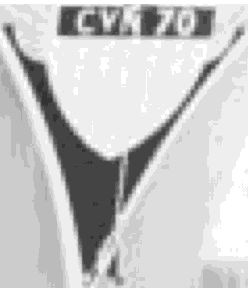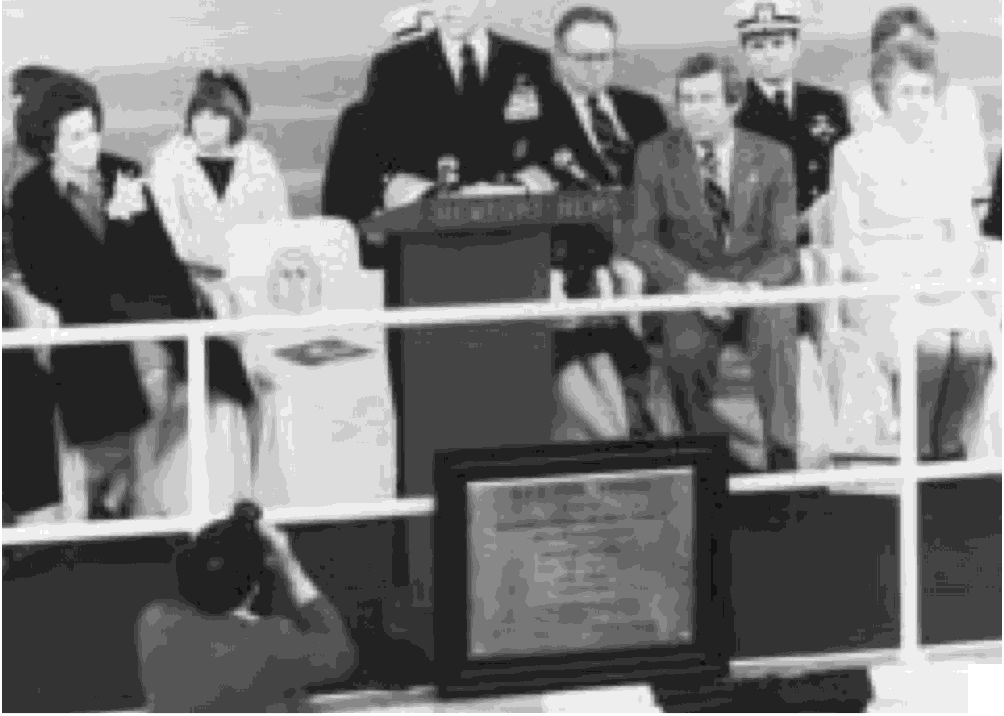

1973-Contin ued
7 December
Tarawa,
the first of a new class of
amphibious assault ships, was launched at Pascagoula,
Miss.
17 December
Iwo Jima
departed Tunisia after three
days of flood relief assistance by her helicopters which
conducted refugee rescue, equipment deliveries and
other flood associated missions.
20 December
Two women physicians, Lieutenants
Jane O. McWilliams and Victoria M. Voge, graduated
from the Naval Flight Surgeon Training Program, to
become the first women naval flight surgeons.
20 December
The Naval Air Engineering Center was
relocated officially from Philadelphia, Pa., to NAS
Lakehurst, N.J., and authority and responsibility for the
air station was reassigned to the Chief of Naval
Material to be exercised through NAVAIR.
Subsequently, on 8 January 1974, the Air Station was
placed under the Naval Air Engineering Center.
Thereby, the basic organization arrangements involved
in relocation of the Naval Air Engineering Center from
League Island, Philadelphia to NAS Lakehurst were
completed although the physical transfer would be
phased over much of 1974. The relocation was part of
the Shore Establishment Realignment announced by
the Secretary of Defense in March of 1973. Thus, an
affiliation between Naval Aviation and the League
Island site at Philadelphia, which began with the
establishment of the Naval Aircraft Factory in 1917,
was terminated except for a few residual aviation ori-
ented functions.
31 December
Ellyson Field, NAS Pensacola, Fla.,
officially became the Naval Education and Training
Program Development Center to administer the Navy's
enlisted advancement system, including the develop-
ment of advancement and special examinations as
well as administering and conducting various courses,
studies and training programs.
1974
18 January
The Secretary officially named the
Navy's fourth nuclear-powered carrier
Carl Vinson.
The name was chosen in honor of Carl Vinson's con-
tributions to the national defense during his fifty years
in the House of Representatives.
4 February
VT-4 students aboard
John F Kennedy
conducted the final flights of the TF-9J Cougars.
UNITED STATES NAVAL AVIATION
1910-1995
307
5
February
The Naval Aerospace Institute at
Pensacola, Fla., announced that the repatriated Navy
and Marine Corps prisoners-of-war from Vietnam were
scheduled to come to Pensacola for periodic checks of
their physical and mental status.
8 February
Skylab IV astronauts Lieutenant Colonel
Gerald P. Carr, USMC, mission commander, Dr.
Edward Gibson, and Lieutenant Colonel William
Pogue, USAF, landed in the Pacific after a record-set-
ting 84 days in space. They were recovered by HC-1
which flew them aboard
New Orleans.
This event
marked the 32nd astronaut retrieval by Naval Aviators
since the space program began in 1961.
20 February
The S-3A Viking ASW aircraft was
introduced officially in the Navy in ceremonies at NAS
North Island, Calif. VS-41 accepted the first aircraft.
The Viking, a highly advanced, carrier-qualified jet air-
craft, was designed to replace the older, propeller-
driven S-2 Tracker which had been the Navy's primary
carrier-based submarine hunter for over twenty years.
I" -
I.!
\_
\.J -
-(
...J
ADM Thomas B. Hayward, CND, deliveljng remarks at the launch-
ing ceremony for Carl Vinson
in 1980 KN-29933
 |
29 |
 |